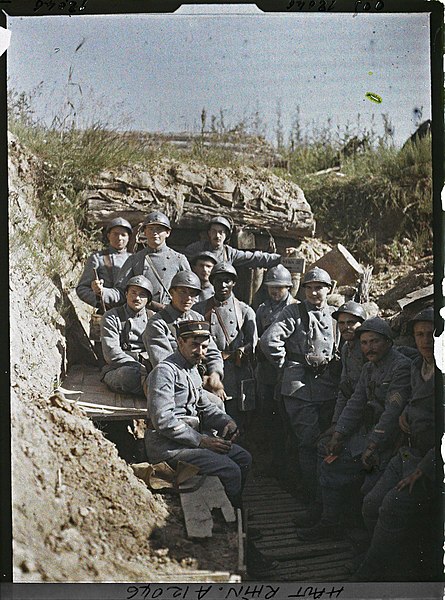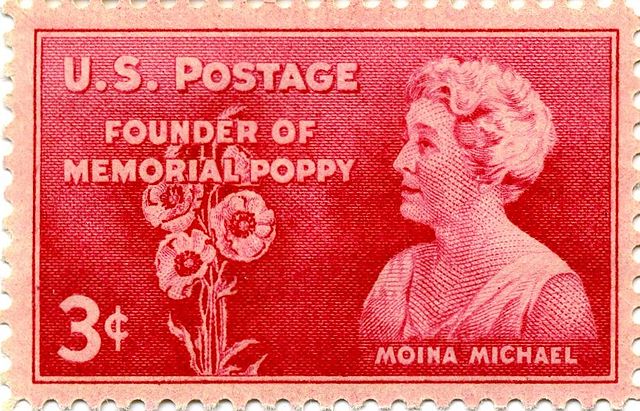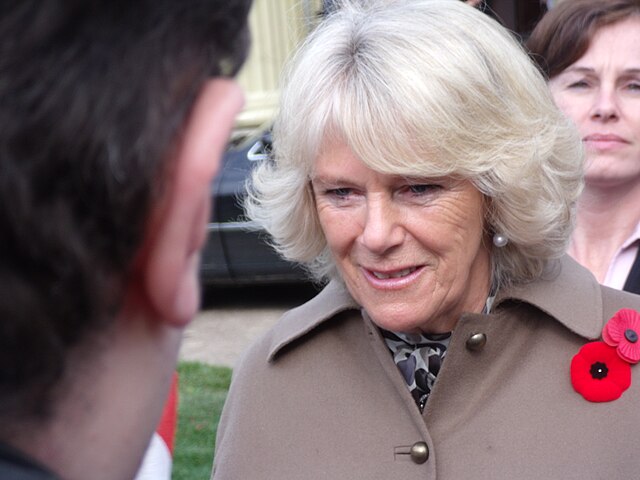In France, the bleuet de France is the symbol of memory for, and solidarity with, veterans, victims of war, widows, and orphans, similar to the Commonwealth remembrance poppy. The sale of "bleuet de France" badges on 11 November and 8 May is used to finance charitable works for those causes.
Bleuet de France, 2013 version
Bleuet de France, 2012 version
World War I French soldiers at rest, wearing their iconic blue uniforms.
Propaganda postcard.
A remembrance poppy is an artificial flower worn in some countries to commemorate their military personnel who died in war. Remembrance poppies are produced by veterans' associations, who exchange the poppies for charitable donations used to give financial, social and emotional support to members and veterans of the armed forces.
A Canadian remembrance poppy adorns a memorial with the words to "In Flanders Fields" at McCrae House.
Moina Michael on a U.S. postage stamp. Michael first proposed using poppies as a symbol of remembrance.
1921 British remembrance poppy. Cotton and silk poppies were made in devastated areas of France by Madame Guérin, "The Poppy Lady from France" and the originator of Poppy Day for the widows and orphans of soldiers killed during the war
Queen Camilla (then Duchess of Cornwall) wearing a Scottish poppy (top) and a Canadian poppy (bottom).








